A TRAVEL NEWS ARTICLE ABOUT NORWAY
OSLO
Detective Harry Hole’s home
With over five million books sold worldwide, Harry Hole’s creator Jo Nesbo has brought the Norwegian capital City of Oslo into many homes. Oslo, of course, needs no introduction, as it’s streets offer a treasure trove of architecture, history and art. It’s modern buildings blending in surprisingly well with those with the more classic approach.

Oslo City Hall
Naturally, nestling comfortably at the end of the Oslo fjord , many visitors now arrive by cruise ship and swell the tourism count when added to the many coming in by plane, train, car and ferry.
Talking about planes, Oslo’s main airport is Gardermoen Airport which is located in Ullensaker, 47 kilometres (29 miles) from the city centre. Oslo is also served by two secondary airports, which are used by some low-cost carriers. Rygge Airport is 60 kilometres (37 miles) outside Oslo and Torp Airport, which is 110 kilometres (68 miles) from the city.
Oslo Central Station is the capital’s rail hub offering domestic and international connections. It’s also the terminal for the Airport Expresses high-speed transfer from Gardermoen Airport.
Once you have arrived in Oslo you will be please to know that it has an extensive public transport system including a 6 line Metro network, a Tramway and a Commuter Rail service. The city is also crisscrossed by a bus network consisting of 32 routes.

The inspiration for London's 'Boris Bikes'?
Driving north from Europe or coming off one of the many island ferries as well as those ferries arriving from Denmark and Germany, you will be pleased to know that the two major motorways through Oslo are European Route E6 and E18.
Now for some snow covered pursuits. Holmenkollbakken is a large ski jumping hill located in the Oslo suburb of Holmenkollen. It has a capacity of 30,000 spectators. and hosted the 1952 Winter Olympics and the FIS Nordic World Ski Championships. The ski jump is just a part of the Holmenkollen National Arena, which boasts cross- country and biathlon venues.
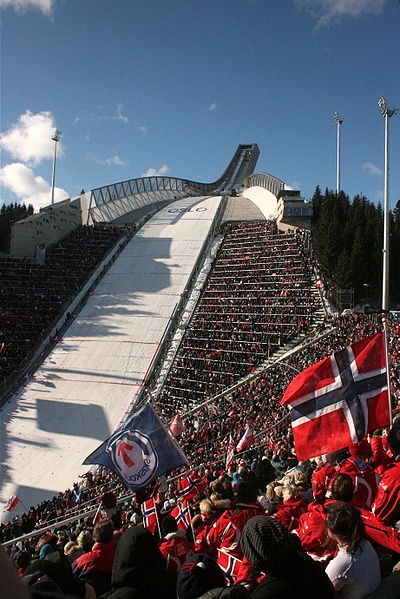
As I mentioned at the beginning of this brief introduction, Norway and in particular Oslo is steeped in history and is home to a profusion of sculptures housed in museums as well as in public places. A particular favourite of mine is the replica statue of Winston Churchill which stands on Solli plass and, if my memory serves me correctly, is centrally heated to keep it from being covered with snow. It is very popular with pigeons who fly in to warm their feet on the great man’s head.
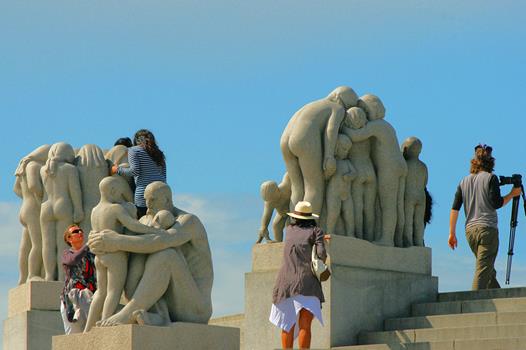
Photo from 'Visit Olso'
Possibly one of the world’s most exciting and enjoyable sculpture venues is contained within Froger Park. The Vigeland Sculpture Arrangement consists of sculptures as well as bridges and fountains. Gustav Vigeland, born in 1869 and died 1943, occupies a special position among Norwegian sculptors, both in the power of his creative imagination and in his productivity. As well as his many sculptures, he also designed Nobel Peace Prize medal.

The Nobel Peace Centre
This leads me beautifully on to the Nobel Peace Prize. It is one of the five Nobel Prizes created by the Swedish industrialist, inventor, and armaments manufacturer Alfred Nobel. Due to it’s political nature, the Nobel Peace Prize has, for most of its history, been the subject of controversy. The Nobel Peace Center in Oslo is where you can find out about all the prize winners as well as Alfred Nobel himself. At the heart of the centre is the Nobel Field, a "garden" of 1,000 blinking fiber optic lights where all the Peace Prize laureates are represented on digital screens.
Now we head towards two projects aimed at protecting history.
The Viking Ship Museum houses many complete or nearly intact Viking ships. Its most famous ship is the completely whole Oseberg ship. There are other Viking Age relics on display.
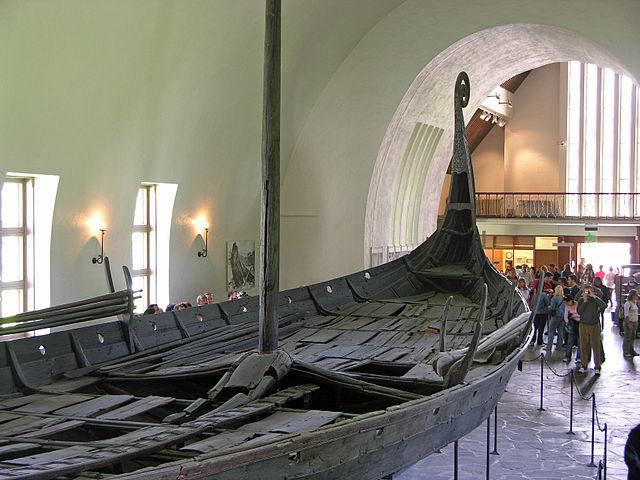
Now to the Novsk Folkemuseum, which is really the Norwegian Museum of Cultural History. It comprises a large open air museum with more than 150 buildings relocated from towns and rural areas throughout Norway. The museum is located in Bygdøy, on a peninsula on the western side of Oslo, and is handy for visiting several other museums, including the Viking Ship Museum.

Finally I cannot finish off without mentioning a couple of examples of the extraordinary architecture that has recently added to the universal appeal of the city.
The Oslo Opera House, home of the Norwegian National Opera and Ballet, is centrally located in the Bjørvika neighborhood of Oslo and at the head of the Oslo fjord. The main auditorium with 1,364 seats also houses two other performance areas that can seat 200 and 400. The angled exterior surfaces of the building are covered with Italian marble and white granite and gives you the impression that it is rising from the water.
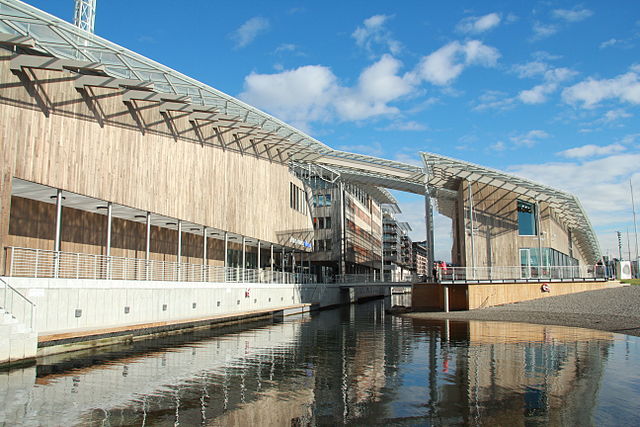
The Astrup Fearnley Museum of Modern Art is a privately owned Contemporary Art gallery in the city. It was founded and opened to the public in 1993 with it’s main focus on the American appropriation artists from the 1980s. In 2012 the museum relocated to it’s current home comprising two new buildings by the famous Genoese architect Renzo Piano.
As with most Scandinavian cities and towns, the streets of Oslo are noticeably free of litter. I do hope that this stroll through Oslo will encourage you to visit this fine city.

The Royal Palace in Oslo
For lots more information please visit www.visitoslo.com
You may also like to read

HOLLAND - CAPITAL CITY - THE HAGUE
By bike, tram and by foot Tim Ware explored Scheveningen and The Hague for Tour-smart
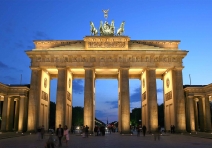
GERMANY - BERLIN
Berlin, Germany's exciting capital brought to life on the pages of Tour-smart by Bryn Frank.

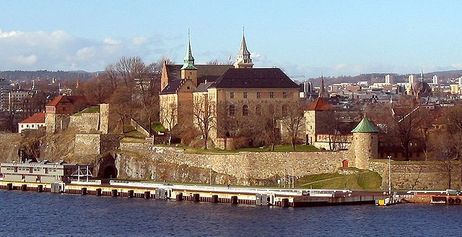

Comments